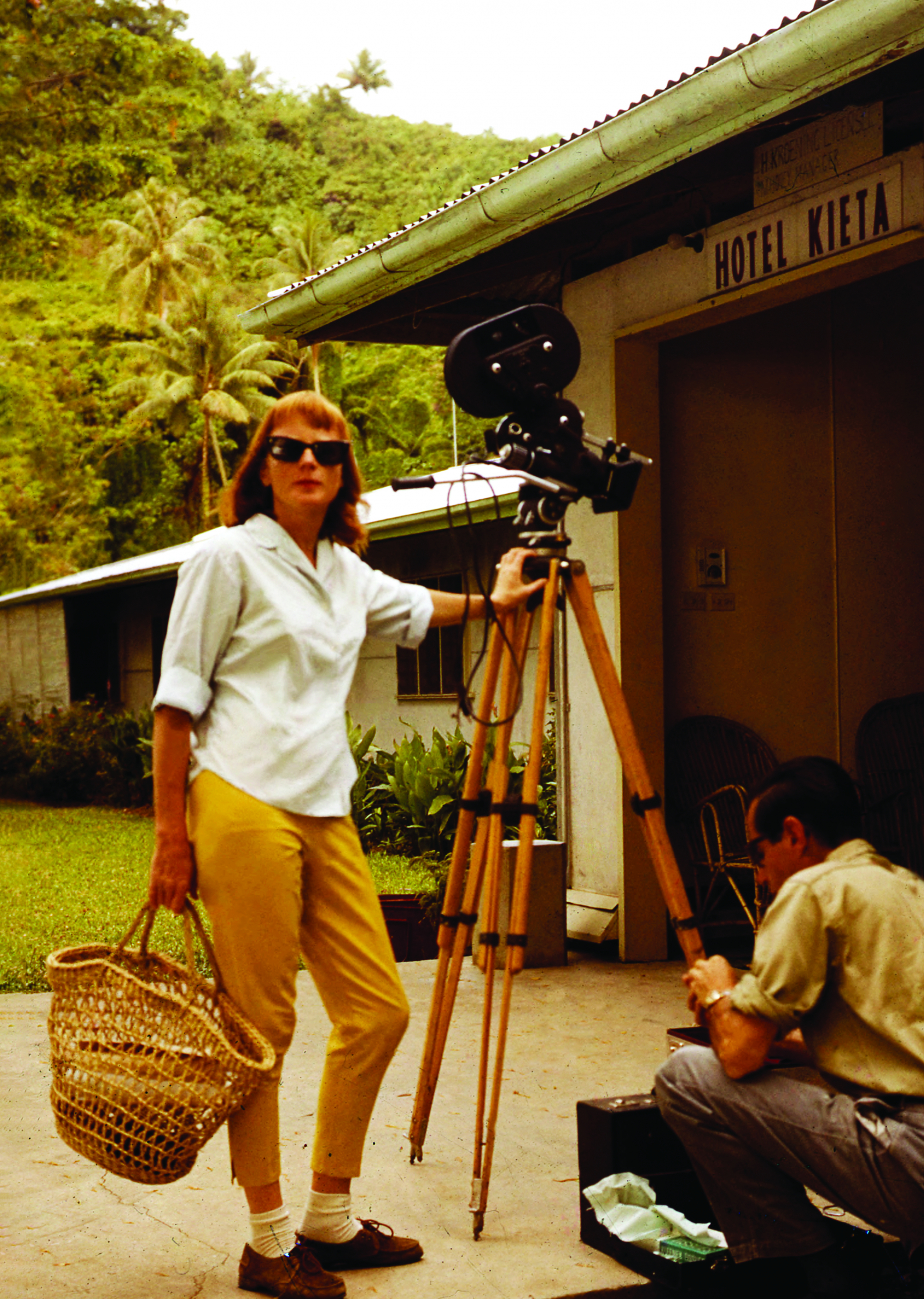When the Camera Stopped Rolling (Jane Castle, 2021) opens with a rather graphic description of how Australian filmmaker Lilias Fraser died: first run over by a train, she was left to be further stampeded by carriages until hours later when her body was discovered. It’s a grisly tale, but one that the documentary returns to in more delicate, introspective fashion in its closing passages.
It may seem an unusual choice to begin the film with the details of its subject’s death, particularly when the director is the subject’s child. But looking at it another way, this introduction actually sets the story off perfectly. After all, Fraser is not a name many will likely know – even those whose knowledge of the Australian film industry runs comparatively deep – and the reality of her death cannot be ignored for the sake of politeness. By positioning it up front, Castle lets her mother’s memory be defined by something other than a cruel act of fate. It jolts the viewer early, yes. But hopefully, by the film’s end, Fraser’s name will come to mean more than just the grim account of how she died, and viewers will instead be left with a career that examined a changing Australia through an entirely singular perspective for its time.
As a matter of fact, it’s the same reason I’m putting it up the top of this article, too.
A quiet achiever
Castle’s film screened at the Sydney Film Festival’s delayed 2021 event, competing for the Documentary Australia Foundation Award. In this category, it premiered alongside Television Event (Jeff Daniels, 2020) and The Kids (Eddie Martin, 2021), which are both documentaries by Australian creative teams about the visions of American filmmakers. When the Camera Stopped Rolling, in contrast, is very much about Australian moviemaking.
This isn’t – like so many biographical documentaries – a single-minded exploration of one person’s career, however. Produced by another important name in Australian non-fiction production, Pat Fiske,[1]See Peter Galvin’s article on Fiske’s documentary Rocking the Foundations in this issue of Metro, pp. 116–128. the film weaves biography and autobiography together in telling Fraser’s fraught story, and how Castle’s own career as a cinematographer and filmmaker emerged from a desire to better connect with her mother. It becomes, then, a rare examination of a mother–daughter relationship infused with and bound by a love of stories, images and the camera.
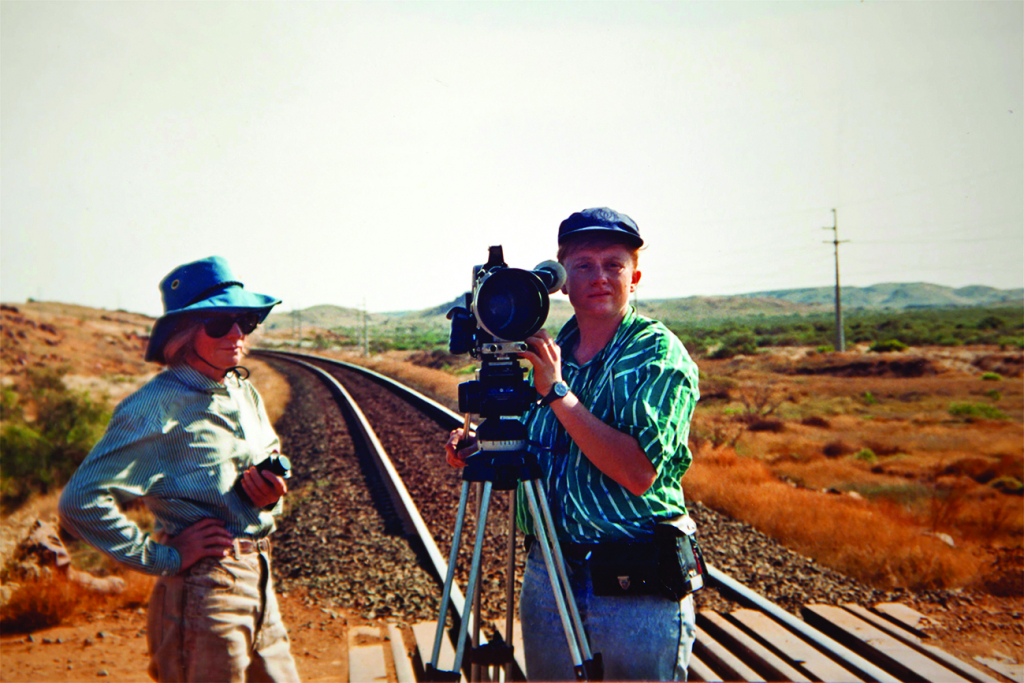
Narrated exclusively by Castle and forgoing talking heads or third-party interviews, When the Camera Stopped Rolling focuses attention squarely on her own interpretation of her mother’s life. She uses excerpts from letters to fill in blanks about her parents’ fractured relationship, but remains steadfastly inward-looking. Like similarly introspective Australian independent documentaries The Silences (Margot Nash, 2015),[2]See Kit MacFarlane, ‘The Tyranny of the Unspoken: The Silences, Autoethnography and Mental Health’, Metro, no. 188, Autumn 2016, pp. 82–5. Baxter and Me (Gillian Leahy, 2016)[3]See Adrian Martin, ‘Dog Day, Every Day: Gillian Leahy’s Baxter and Me and the Essay Film’, Metro, no. 192, 2017, pp. 86–9. and The Last Goldfish (Su Goldfish, 2017), When the Camera Stopped Rolling could be considered a personal essay film. Castle allows the emotions underpinning her film’s narrative to percolate rather than loudly state their case, which for some may mean it lacks energy or ambition. Personally, I found the film soothing despite its tough subject matter; it has an ease to its storytelling that recalls a gentle afternoon flipping through an old family album, discovering a life through untold memories and captured moments in time rather than through what we have been conditioned to accept as life’s great achievements – particularly for an artist who never found those easy to come by.
As with so many documentaries, it is the editing – in this case, overseen by Ray Thomas, who received an AACTA nomination for his efforts – that really makes the film work. It would be easy to imagine some sort of Stories We Tell–style shenanigans[4]Sarah Polley’s 2012 autobiographical documentary made use of a mix of real footage and re-enactments. See Nicole Sperling, ‘Sarah Polley Reveals Moviemaking Secret About Stories We Tell’, Los Angeles Times, 21 May 2013, <https://www.latimes.com/entertainment/movies/la-xpm-2013-may-21-la-et-mn-sarah-polley-secret-stories-we-tell-20130520-story.html>, accessed 3 March 2022. going on here given the talent involved, but Castle and Thomas have utilised only real and available video. Thomas fuses a wealth of home-movie footage with archival movie clips and photographs as well as newly shot, moody vignettes of cities, landscapes, light effects and, most importantly, crashing waves and windswept beaches (Fraser’s ‘great love’) to create something almost impressionistic. Additionally, its relatively brief runtime of just seventy-five minutes means Castle doesn’t need to aimlessly fill her space with documentary crutches.
Lives on the Australian front line
Some of Castle’s more traditionally entertaining segments come when she swerves into autobiography. Her own career is rich and stacked: as a music-video cinematographer and director, she worked with the likes of Midnight Oil, Dannii Minogue, INXS, Mary J Blige, Divinyls and Prince, as well as co-shooting concert film k.d. lang: Live in Sydney (Frances Dickenson & Caz Gorham, 1997); she also worked as cinematographer for local independent movies including Fistful of Flies (Monica Pellizzari, 1996) and American genre shlock like Leprechaun 2 (Rodman Flender, 1994), the latter of which brings about Castle’s snarkiest scripting at her own expense.
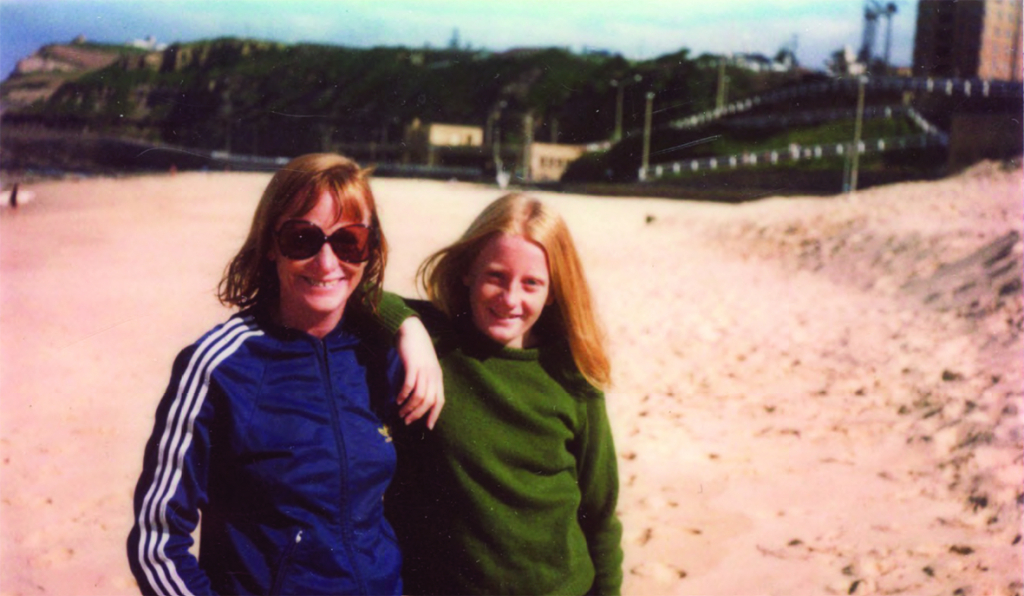
Coming two decades after Castle’s directorial debut, the politically themed documentary Sixty Thousand Barrels (2002), When the Camera Stopped Rolling has been ten years in the making.[5]See ‘Jane Castle: When the Camera Stopped Rolling’, FilmInk, 22 October 2021, <https://www.filmink.com.au/jane-castle-when-the-camera-stopped-rolling/>, accessed 8 January 2022. But with that roll call of work, it’s surprising that more chances didn’t come – and a shame, really, as her work as cinematographer was evocative and stylish, emblematic of the era but no less brimming with individuality.
Similarly, Fraser’s work is presented here beautifully, highlighting the way she used lovingly observational close-ups, eye-popping aerial photography and more classical cinema vérité filming styles to tell stories, often within the complex logistical spaces created by frequently having to make films for large corporations selling Australia as a mining and manufacturing hub. To watch the all-too-brief clips from For Tomorrow (1965), Australian by Design (1966), Aluminium in Australia (1966), Mining Men (1970) and Beyond the Boom: Metal Mining in Australia (1970) is to watch a filmmaker take fixed parameters and inject them with her own sensibilities and eye for beauty, in an era before technology allowed anything and everything on screen.
Fraser later found spotlights for issues affecting the civil rights movements of Aboriginal Australians, making the first ever film about Indigenous land rights, This Is Their Land (1970).[6]See Martha Ansara, ‘Through the Lens, Determinedly’, The Sydney Morning Herald, 19 November 2004, <https://www.smh.com.au/national/through-the-lens-determinedly-20041119-gdk57t.html>, accessed 3 March 2022. Newly divorced, she was also spurred on by the women’s liberation movement and her membership of the Sydney Filmmakers Co-operative. Although this documentary does not necessarily place Fraser’s career right up alongside those of her female directorial contemporaries, it does subtly intertwine it with those of Margot Nash, Martha Ansara, Pat Fiske, Rivka Hartman, Jeni Thornley, Rosalind Gillespie and Carole Sklan – important names who have been offered varying degrees of academic recognition in the years since.[7]For further discussions by and about these filmmakers, see Annette Blonski, Barbara Creed & Freda Freiberg (eds), Don’t Shoot Darling! Women’s Independent Filmmaking in Australia, Greenhouse Publications, Richmond, Vic., 1987; and Chris Luscri, ‘Australian Autofiction: A Filmmaker Roundtable by Chris Luscri’, Senses of Cinema, no. 99, July 2021, <https://www.sensesofcinema.com/2021/australian-autofiction-2/australian-autofiction-a-filmmaker-roundtable/>, accessed 3 March 2022. Certainly, they have achieved a higher profile than Fraser, who had a bigger filmography and more varied experience – ranging from nature documentaries to corporate industrials – than any of the above, yet nonetheless worked on the periphery of the industry.
The often-combative relationship between Castle and her mother, however, is maybe best explained by one of Fraser’s own quotes: ‘Family doesn’t replace creativity.’ To watch When the Camera Stopped Rolling is to witness a life out of sync with what’s around it. Fraser’s professional development was much faster than that of her fellow students at the Institute for Advanced Cinematographic Studies in Paris, but she had children early in life and was unhappily married as a result. The idea of women in film wasn’t something people paid attention to until the work she wanted to make was no longer in vogue. Smashing the glass ceiling probably meant little to her if it didn’t mean she would be able to make the films she wanted to make.
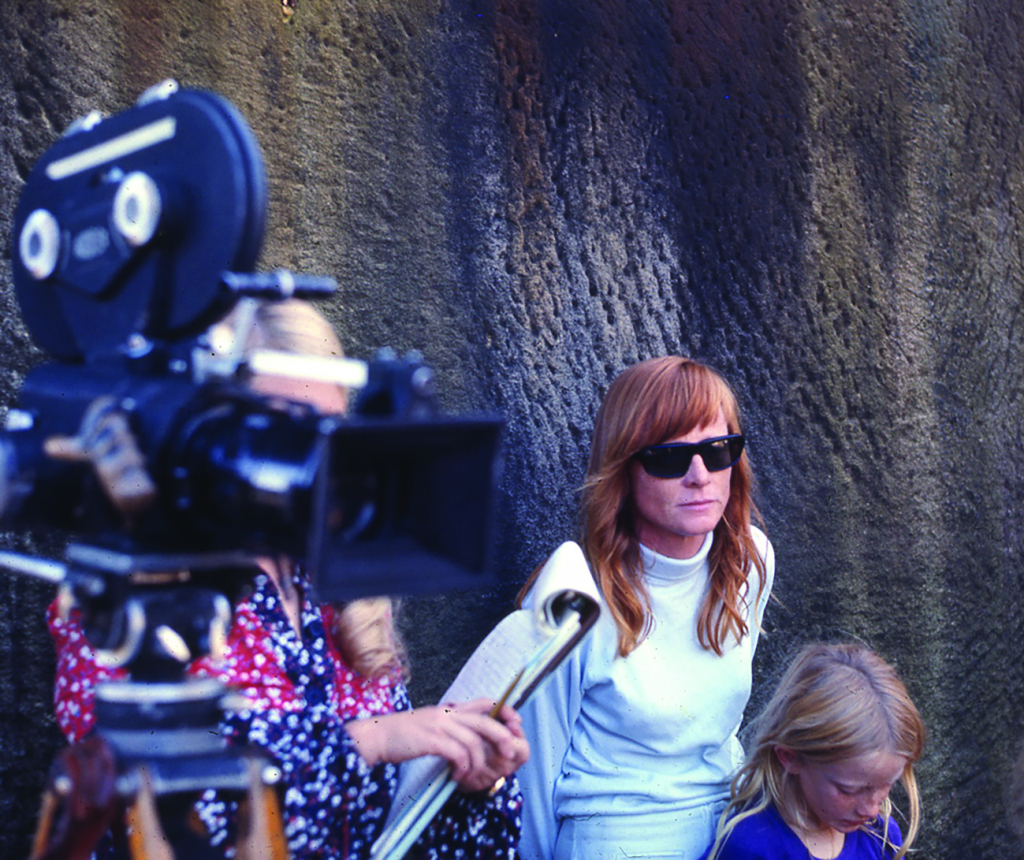
Out of the archives and into the streets
For many, When the Camera Stopped Rolling will be a film primarily about the experience of women within the Australian (and global) film industry. International statistics provided by the Center for the Study of Women in Television and Film in 2020 show that documentary is the most welcoming medium for women in film,[8]See Martha M Lauzen, ‘Indie Women: Behind-the-scenes Employment of Women in Independent Film, 2019–20’, Center for the Study of Women in Television and Film, San Diego State University, 2020, p. 2, <https://womenintvfilm.sdsu.edu/wp-content/uploads/2020/10/2019-2020_Indie_Women_Report.pdf>, accessed 3 March 2022. so Fraser serves as a pioneer twice over. The film’s mission in this regard is clearly to bring more attention to a female filmmaker in a sector that, no matter how many initiatives are put in place, remains overwhelmingly dominated by men.
But for all this talk about Fraser’s work since she shot The Beach in 1957, there is currently no way to actually watch her films. For me, then, When the Camera Stopped Rolling is equally about what indeed happens when the camera stops filming, an editor stops editing and a film is put out into a world with few means for seeing, engaging with or discussing it.
Generations of documentaries … are all but gone from public view without a financially viable avenue for discovery. If award-winning films starring recognisable names can’t seem to escape the archives, then what hope do Fraser’s works have?
Many of Fraser’s works – including Water Birds of the Inland (co-directed with Norman Castle, 1964) and Nests in the Bush (1958), from her days at the Commonwealth Film Unit, and Women of the Iron Frontier (1990), which was broadcast by the ABC and screened at France’s Cinéma du réel festival – are stored at the National Film and Sound Archive of Australia.[9]Some of these are listed under her married name, Lilias Castle. At the time of writing, these are predominantly only in 16mm or videotape format, and are all but outside the realm of watchability for the general public (logistically and financially). There have been no home-entertainment releases of her work, and repertory screenings are extremely rare. Fraser won the Australian Screen Directors Association’s Cecil Holmes Award for services to directing in 1999, but this recognition doesn’t seem to have spurred any real revival of her works in the past two decades, including at film festivals.
Even When the Camera Stopped Rolling will likely struggle to reach viewers outside of the festival circuit[10]The film was scheduled for a limited theatrical release across April and May 2022. unless it plays on ABC or SBS. The Australian film industry is littered with similar filmmakers who never reached the levels of success of their contemporaries (such as Peter Weir, Phillip Noyce and Gillian Armstrong), and whose works have largely fallen into the archival abyss. Generations of documentaries, narrative features and shorts that never made the leap from VHS to DVD – let alone to streaming – are all but gone from public view without a financially viable avenue for discovery. If award-winning films starring recognisable names like Wrong World (Ian Pringle, 1985) can’t seem to escape the archives, then what hope do Fraser’s works have?
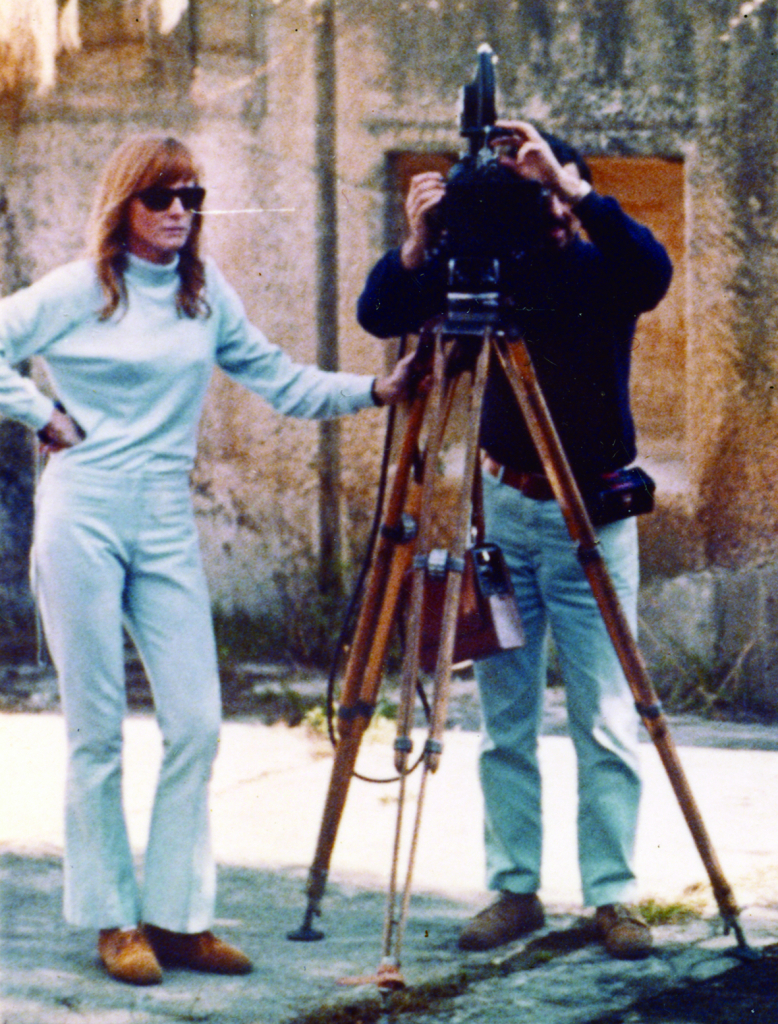
Castle’s film does follow a minor documentary trend that suggests putting a spotlight on the local industry’s lesser known – but no less significant and pioneering – names is on the minds of many. Australian non-fiction production is a much less rigorously documented artform than its feature counterparts, so it can be hard to pinpoint when exactly this began, but going back as far as Don’t Call Me Girlie (Andree Wright & Stewart Young, 1985), one can already find Australian filmmakers grappling with the untold stories of this country’s screen culture; while Hunt Angels (Alec Morgan, 2006), which won the Australian Film Institute Award for Best Documentary for its lavish CGI recreations of 1930s Sydney, was another key turning point.[11]See Ina Bertrand, ‘The Impossible Dream: Hunt Angels’, Metro, no. 151, 2006, pp. 10–3. The recent burst of similarly themed documentaries includes Women He’s Undressed (Armstrong, 2015),[12]See Mel Campbell, ‘Beautiful Women and No Mirrors: Gillian Armstrong’s Women He’s Undressed’, Metro, no. 187, Summer 2016, pp. 96–101. Jill Bilcock: Dancing the Invisible (Axel Grigor, 2017),[13]See Oliver Pfeiffer, ‘Creation in the Cutting Room: Jill Bilcock on the Art of Film Editing’, Metro, no. 197, 2018, pp. 84–7. She Who Must Be Obeyed Loved (Erica Glynn, 2018),[14]See Paola Balla, ‘Mother Tongue: She Who Must Be Obeyed Loved and Aboriginal Women’s Stories’, Metro, no. 202, 2019, pp. 74–9. Ablaze (Morgan & Tiriki Onus, 2021)[15]See Stephen A Russell, ‘Flame of Truth: Tiriki Onus and Alec Morgan on Ablaze’, Metro, no. 210, 2021, pp. 38–41. and the works of Mark Hartley,[16]See Alexandra Heller-Nicholas, ‘Ozploitation Revisited: Not Quite Hollywood’, Metro, no. 158, 2008, pp. 14–7. all of which have given light to those behind the scenes at pivotal moments in Australian film history. Even in New Zealand, Merata: How Mum Decolonised the Screen (Hepi Mita, 2018) follows a similar narrative to Castle’s film, charting the career of the director’s mother, pioneering Māori filmmaker Merata Mita.
Like all those titles and others, When the Camera Stopped Rolling reveals layers that have been hidden for too long behind an established (predominantly straight white male) narrative regarding the Australian film industry, and a subject who ought to be elevated from just being a footnote (if that – amazingly, Fraser only has two credits on the Screen Australia website[17]‘Lilias Fraser’, Screen Australia website, <https://www.screenaustralia.gov.au/the-screen-guide/p/lilias-fraser/7355/>, accessed 3 March 2022.). From the glimpses we are offered here, her work is deserving of more attention than this documentary alone.
If When the Camera Stopped Rolling can get Lilias Fraser’s name recognised by her home country’s industry, then that would be a victory. If it can lead to some kind of release of her impressively mounted, impeccably photographed works – which depict an Australia in a state of flux between the minerals boom and the political progressivism it spurred on – then even better. Australia should not let Fraser’s work sit and collect dust like so many of the mining towns she filmed; it’s well past time she gets the respect she is due as a pioneer of documentary. Now that Castle’s film has been released, there really is no excuse.
https://whenthecamerastoppedrolling.film/
Endnotes
| 1 | See Peter Galvin’s article on Fiske’s documentary Rocking the Foundations in this issue of Metro, pp. 116–128. |
|---|---|
| 2 | See Kit MacFarlane, ‘The Tyranny of the Unspoken: The Silences, Autoethnography and Mental Health’, Metro, no. 188, Autumn 2016, pp. 82–5. |
| 3 | See Adrian Martin, ‘Dog Day, Every Day: Gillian Leahy’s Baxter and Me and the Essay Film’, Metro, no. 192, 2017, pp. 86–9. |
| 4 | Sarah Polley’s 2012 autobiographical documentary made use of a mix of real footage and re-enactments. See Nicole Sperling, ‘Sarah Polley Reveals Moviemaking Secret About Stories We Tell’, Los Angeles Times, 21 May 2013, <https://www.latimes.com/entertainment/movies/la-xpm-2013-may-21-la-et-mn-sarah-polley-secret-stories-we-tell-20130520-story.html>, accessed 3 March 2022. |
| 5 | See ‘Jane Castle: When the Camera Stopped Rolling’, FilmInk, 22 October 2021, <https://www.filmink.com.au/jane-castle-when-the-camera-stopped-rolling/>, accessed 8 January 2022. |
| 6 | See Martha Ansara, ‘Through the Lens, Determinedly’, The Sydney Morning Herald, 19 November 2004, <https://www.smh.com.au/national/through-the-lens-determinedly-20041119-gdk57t.html>, accessed 3 March 2022. |
| 7 | For further discussions by and about these filmmakers, see Annette Blonski, Barbara Creed & Freda Freiberg (eds), Don’t Shoot Darling! Women’s Independent Filmmaking in Australia, Greenhouse Publications, Richmond, Vic., 1987; and Chris Luscri, ‘Australian Autofiction: A Filmmaker Roundtable by Chris Luscri’, Senses of Cinema, no. 99, July 2021, <https://www.sensesofcinema.com/2021/australian-autofiction-2/australian-autofiction-a-filmmaker-roundtable/>, accessed 3 March 2022. |
| 8 | See Martha M Lauzen, ‘Indie Women: Behind-the-scenes Employment of Women in Independent Film, 2019–20’, Center for the Study of Women in Television and Film, San Diego State University, 2020, p. 2, <https://womenintvfilm.sdsu.edu/wp-content/uploads/2020/10/2019-2020_Indie_Women_Report.pdf>, accessed 3 March 2022. |
| 9 | Some of these are listed under her married name, Lilias Castle. |
| 10 | The film was scheduled for a limited theatrical release across April and May 2022. |
| 11 | See Ina Bertrand, ‘The Impossible Dream: Hunt Angels’, Metro, no. 151, 2006, pp. 10–3. |
| 12 | See Mel Campbell, ‘Beautiful Women and No Mirrors: Gillian Armstrong’s Women He’s Undressed’, Metro, no. 187, Summer 2016, pp. 96–101. |
| 13 | See Oliver Pfeiffer, ‘Creation in the Cutting Room: Jill Bilcock on the Art of Film Editing’, Metro, no. 197, 2018, pp. 84–7. |
| 14 | See Paola Balla, ‘Mother Tongue: She Who Must Be |
| 15 | See Stephen A Russell, ‘Flame of Truth: Tiriki Onus and Alec Morgan on Ablaze’, Metro, no. 210, 2021, pp. 38–41. |
| 16 | See Alexandra Heller-Nicholas, ‘Ozploitation Revisited: Not Quite Hollywood’, Metro, no. 158, 2008, pp. 14–7. |
| 17 | ‘Lilias Fraser’, Screen Australia website, <https://www.screenaustralia.gov.au/the-screen-guide/p/lilias-fraser/7355/>, accessed 3 March 2022. |
